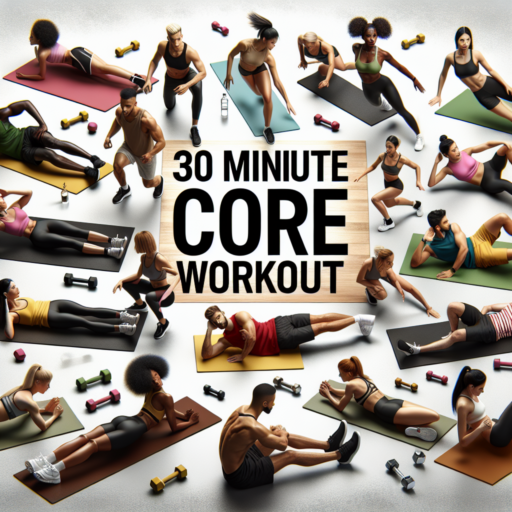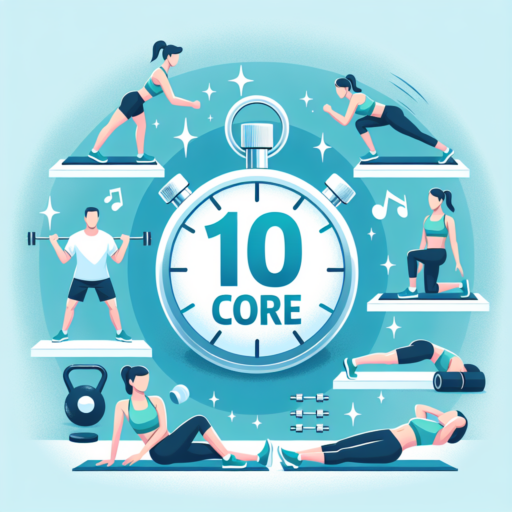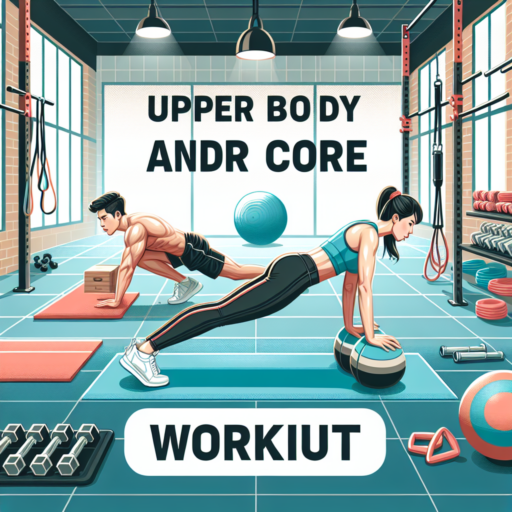What is the Upper Core and Why is It Important?
The upper core is often discussed in fitness and wellness circles, yet many might not fully understand its significance or components. Essentially, the upper core refers to the muscles located in the upper part of the abdominal region, specifically the area encompassing the diaphragm, the rectus abdominis (often known as the six-pack muscles), and the internal and external obliques. These muscles play a crucial role in not only providing stability to the upper body but also in facilitating movement and supporting proper posture.
Understanding the importance of the upper core is key to recognizing its role in enhancing overall physical health. These muscles are integral to the body’s movement, assisting in bending, twisting, and supporting the spine. A strong upper core is vital for preventing injuries, particularly around the back and spine, which is paramount for everyone from athletes to individuals engaged in everyday activities. Furthermore, the strength and stability provided by a well-conditioned upper core are crucial for improving performance in sports and other physical activities, making it a focal point in exercise routines.
Beyond the physical benefits, a robust upper core impacts other aspects of well-being. It contributes to better breathing, as the diaphragm is a major muscle in the respiratory system. Strengthening this area can enhance lung capacity and breathing efficiency, which is beneficial not just for physical activity but also for stress management and relaxation. Therefore, emphasizing upper core strength in fitness programs can lead to significant improvements in both physical and mental health.
The Anatomy of the Upper Core: Understanding the Muscles Involved
The upper core is not just about achieving a visually appealing midsection; it plays a vital role in overall strength, stability, and posture. Understanding the intricacies of the muscles involved in the upper core can help in designing more effective workout plans and achieving better postural health. This area encompasses a group of muscles that work together to support the upper body and facilitate a range of movements.
Key Muscles of the Upper Core
The primary muscles that compose the upper core include the rectus abdominis, the external obliques, and the transversus abdominis. Each of these muscles plays a unique role in core stability and movement. The rectus abdominis, often targeted for its aesthetic ‘six-pack’ appearance, is crucial for flexing the lumbar spine and supporting the upper body during bending movements. The external obliques, located on either side of the rectus abdominis, are essential for rotational movements and lateral flexion of the spine. Lastly, the transversus abdominis is the deepest set of muscles, acting like a corset to enhance stability and support the internal organs.
Functionality and Benefits
The muscles of the upper core are indispensable not only in performing daily activities but also in enhancing athletic performance. A strong upper core is fundamental for tasks that require lifting, twisting, and sustained postural control. Furthermore, conditioning these muscles can lead to improved balance, reduced back pain, and a lower risk of injuries. Engaging in a routine that focuses on strengthening the upper core can significantly contribute to overall physical wellness and functional strength.
Top Benefits of Strengthening Your Upper Core
Strengthening your upper core is much more than achieving an aesthetically appealing silhouette. The benefits extend far beyond surface-level appearance, influencing everything from your daily activities to your overall health and well-being.
Enhanced Postural Support
A strong upper core is instrumental in maintaining proper posture. Whether you’re sitting at a desk, standing for long periods, or engaging in physical activities, a strengthened upper core can help reduce back pain and minimize the risk of injuries. Improved posture also promotes better breathing and digestion, as it allows your internal organs to function without unnecessary constraint.
Improved Physical Performance
For athletes and fitness enthusiasts, the benefits of a strong upper core cannot be overstated. This area of the body is pivotal in stabilizing your torso, which is essential for optimal performance in virtually any sport or physical activity. From lifting weights to running, and even swimming, a fortified upper core enhances your power, agility, and endurance, allowing you to perform at your best.
Boosted Everyday Functionality
The advantages of focusing on your upper core strength also spill over into your daily life. Routine actions such as lifting groceries, playing with your children, or even doing household chores become easier and less taxing on your body. A strong upper core means you’re less likely to experience fatigue during these everyday activities, giving you more energy to enjoy life to its fullest.
5 Essential Upper Core Exercises for Beginners
Starting a fitness journey can be overwhelming, but targeting the upper core is an excellent first step to building overall strength and stability. These 5 essential exercises are perfect for beginners, focusing on simplicity and efficiency without the need for specialized equipment. Mastering these movements can lay a strong foundation for more advanced workouts in the future.
Plank Variations
Plank exercises are fundamental for building upper core strength. Beginners should start with the classic plank, aiming for a few seconds and gradually increasing the duration. To add diversity and challenge, forearm planks and side planks can be introduced, emphasizing shoulder stability and oblique strength. Each variation targets the core differently, ensuring a comprehensive upper core workout.
Modified Push-Ups
Push-ups are renowned for their upper body benefits, but they also heavily engage the upper core. For beginners, modified push-ups, where knees are kept on the ground, can provide a more accessible starting point. This adaptation allows for the development of strength in the chest, shoulders, and core simultaneously. Focusing on form and gradual progression is key to reaping the benefits of this exercise.
Incorporating these exercises into your routine can dramatically improve upper core strength, providing a solid base for further fitness endeavors. Each exercise comes with its set of challenges, but with consistent practice and dedication, beginners can see significant improvements in their upper core strength and overall physical health.
Advanced Techniques to Enhance Your Upper Core Strength
Enhancing your upper core strength is crucial for both athletic performance and everyday activities. The upper core, encompassing the muscles around your abdomen and upper back, plays a pivotal role in stabilizing your torso and providing the foundation for a strong, healthy body. Incorporating advanced techniques into your workout regimen can significantly improve your core’s strength, stability, and endurance. Below, we delve into several strategies designed to elevate your upper core training beyond traditional exercises.
Dynamic Plank Variations
Planks are a cornerstone of core training due to their effectiveness in engaging a wide range of muscles simultaneously. To further challenge your upper core, consider integrating dynamic variations such as plank jacks, rolling planks, and side plank rotations. These modifications not only increase the intensity of the workout but also introduce a balance and coordination element, pushing your upper core to engage more deeply to maintain stability throughout the movement.
Incorporating Stability Tools
Adding stability tools like TRX bands, exercise balls, or Bosu balls to your core exercises can drastically enhance the effectiveness of your training. Implementing tools that introduce an element of instability forces your muscles to work harder to maintain balance, significantly engaging your upper core. Exercises such as TRX pikes, stability ball rollouts, and Bosu ball push-ups can transform your core routine by engaging deeper muscle fibers and promoting better muscle coordination and balance.
Pushing beyond traditional core workouts with these advanced techniques can lead to remarkable improvements in upper core strength. Remember, proper form and gradual progression are key to maximizing the benefits of these exercises while minimizing the risk of injury. Incorporating a variety of these advanced techniques and stability tools will ensure a comprehensive approach to enhancing your upper core strength.
Upper Core Workouts: Home vs Gym – What Works Best?
Deciding where to perform upper core workouts often puzzles fitness enthusiasts who are eager to find the most effective setting for strengthening and toning their abdominal muscles. The dilemma of exercising at home versus the gym encompasses various factors, including convenience, equipment availability, and personal motivation. Both environments offer unique benefits tailored to different fitness goals and lifestyles.
The Advantages of Home Workouts
Home workouts are marked by their unparalleled convenience. Without the need to commute, individuals can easily integrate fitness routines into their daily schedule. This is particularly beneficial for those with time constraints or who prefer the privacy of their own space. At home, exercises like planks, crunches, and mountain climbers can be effectively performed with no equipment, showcasing that building a strong upper core doesn’t necessarily require a gym membership.
The Benefits of Gym-Based Workouts
On the other hand, gyms offer access to specialized equipment, such as cable machines, weighted plates, and stability balls, which can significantly enhance upper core training by allowing for a wider variety of exercises and increased resistance. Additionally, being in a dedicated fitness environment can boost motivation and provide social interaction with like-minded individuals. Gym enthusiasts often find that the accountability and community found in a gym setting spur them to push their limits and consistently progress in their fitness journey.
When exploring the effectiveness of upper core workouts, it’s crucial to consider these aspects of both home and gym exercise routines. By understanding the distinct advantages each setting offers, individuals can make an informed choice that aligns with their fitness goals, lifestyle preferences, and the specific demands of their upper core training regimens.
Common Mistakes to Avoid When Training Your Upper Core
Training the upper core is crucial for building strength, stability, and improving overall physical performance. However, many individuals unknowingly fall into common pitfalls that can impede progress and even lead to injury. Recognizing and avoiding these mistakes is essential for effective and safe core development.
Ignoring Proper Form and Technique
One of the most significant mistakes people make when working on their upper core is neglecting proper form and technique. Engaging in exercises without understanding the correct alignment and movement patterns can lead to strain and potential injury. For instance, when performing crunches or planks, keeping your spine in neutral alignment safeguards your back, while ensuring engagement of the correct muscle groups.
Neglecting the Balance Between Muscle Groups
Another common error is focusing too heavily on specific muscles and neglecting others, leading to an imbalance in muscle development. The core is not just about the abs; it encompasses the entire trunk, including the back muscles. Failure to train the back muscles equally can result in poor posture and increased risk of injury. Incorporating exercises like back extensions or reverse crunches can help maintain a balanced upper core strength.
Remember, avoiding these common mistakes can significantly enhance the effectiveness of your upper core training while minimizing the risk of injury. Emphasize proper technique, and strive for a balanced approach to strengthen your core optimally.
No se han encontrado productos.
Nutrition and Recovery Tips for Upper Core Development
Focusing on your upper core development is more than just spending hours at the gym; it involves a holistic approach where nutrition and recovery play pivotal roles. Ensuring your body gets the right nutrients and recovery time is crucial for muscle growth and strength. Here, we delve into efficient strategies to enhance your nutritional intake and optimize recovery periods for significant upper core development.
Optimizing Nutrition for Muscle Development
Nutrition is the foundation of muscle development, with protein taking the leading role in the process. Consuming a balanced diet rich in protein, healthy fats, and carbohydrates is essential. Foods like lean meats, eggs, dairy, nuts, and legumes should be staples in your diet. Incorporating a variety of fruits and vegetables will also provide the vitamins and minerals necessary for efficient muscle repair and growth.
Effective Recovery Techniques
Recovery is just as crucial as the workout itself. Ensuring you allocate adequate rest days is vital for muscle repair. Techniques like active recovery, which could include light jogging or swimming, help in muscle recuperation. Additionally, practices such as stretching or yoga can enhance flexibility and reduce muscle tightness. Integrating these techniques significantly contributes to your upper core development and overall well-being.
How to Incorporate Upper Core Exercises into Your Daily Routine
Incorporating upper core exercises into your daily routine can significantly enhance your physical health and overall well-being. The upper core, comprising muscles around the upper abdomen and lower chest, plays a pivotal role in stabilizing your torso, improving posture, and ensuring efficient movement. Here’s how you can easily blend these exercises into your day-to-day activities.
Start with Simple, No-Equipment Exercises
Embarking on your upper core strengthening journey doesn’t require fancy equipment or a gym membership. Begin with simple exercises that can be done at home, such as planks and push-ups. Aim to integrate at least two sets of these exercises into your morning routine, dedicating about 10 minutes to gradually activate and strengthen your upper core muscles.
Utilize Small Breaks During the Day
For many, finding a chunk of time for a full workout session is a daunting task. Instead, take advantage of small breaks throughout your day. Incorporate 5-minute sessions of upper core exercises like seated twists or standing bicycle crunches. These can be easily done during short work breaks or even while watching TV, making it a seamless addition to your daily routine.
Incorporate Core Activation in Everyday Activities
Lastly, a subtle yet effective approach is to activate your upper core during everyday activities. This could be as simple as maintaining a slight abdominal contraction while walking or consciously engaging your core muscles when lifting objects around the house. Over time, these small adjustments can lead to significant improvements in upper core strength and stability.
Measuring Progress: Tracking Your Upper Core Strength Over Time
Developing and maintaining upper core strength is crucial for overall health and well-being. However, understanding how to effectively track this progress over time can be challenging. With the right tools and methods, it’s possible to measure improvements and motivate yourself to continue striving towards your fitness goals.
Implementing a Progressive Fitness Routine
One way to track your upper core strength is by implementing a progressive fitness routine that gradually increases in intensity and complexity. By documenting your exercises, the weights you use, and the number of repetitions and sets, you can create a concrete record of your progression. This method not only helps in measuring your strength gains but also in ensuring a comprehensive approach to core development.
Utilizing Technology for Accurate Tracking
Advancements in technology have also made tracking fitness progress more accessible and accurate. There are numerous apps and devices designed to monitor exercise efficiency, with some offering specific features for core strength activities. These tools can provide valuable insights into your performance, help in setting realistic goals, and adjust your workout plan as needed to optimize results.
Regularly assessing your upper core strength through standardized tests or exercises can serve as a direct measure of your physical condition. Whether it’s holding a plank for a longer duration or increasing the load in core-focused exercises, these practical evaluations reflect your strengthening capacity. By setting benchmarks and tracking improvements, you stay informed about your growth and maintain motivation.




